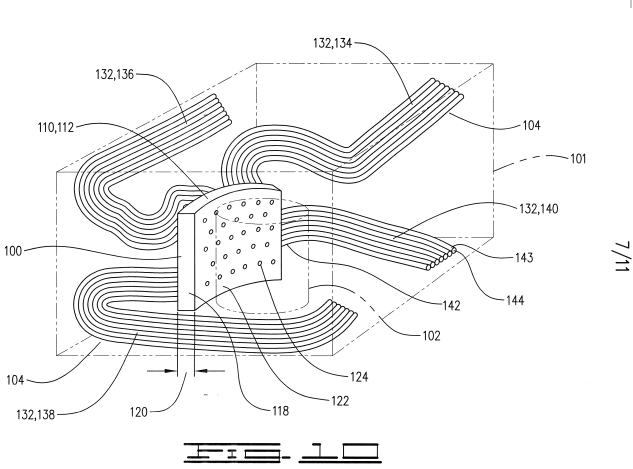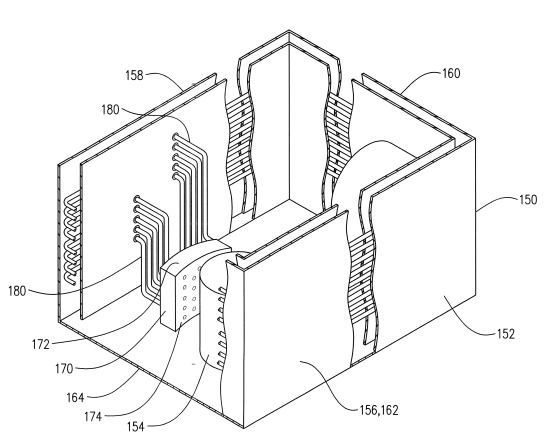BACKGROUND
Low-frequency (<~400 Hz) airborne noise has several detrimental effects ranging from exciting structural vibration modes (with potentially catastrophic results), reducing passenger comfort and payload integrity on commercial flights, restricting military mission capabilities, to massively contributing to noise pollution. Low-frequency noise is consistently identified as a leading cause of unmitigated community noise in areas near airports and in urban environments. However, conventional acoustic dampening technologies only mitigate noise for a narrow frequency band, which is largely ineffective at reducing low-frequency noise. Additionally, altering current technology to mitigate low-frequency noise is impractical in most settings, and can negatively impact the pressure/flow efficiency of a system. The threats posed by low-frequency noise and the lack of efficacy in current technology demonstrate a clear need for novel mitigative technology.
SUMMARY OF TECHNOLOGY
Researchers at OSU have developed a group of novel passive acoustic dampening devices. Broadly, the device is utilizes a sound interface unit, and a plurality of bundled, flexible capped or semi-capped, sound-attenuating tubes (Figures 1 and 2). Overall, the dampener functions by allowing sound to enter the sound interface [118] and then be passively deconstructed via the tubes reducing low-frequency noise levels. By varying the lengths of the tubes the system can be tuned to specific ranges of sound frequency, enabling application optimized solutions that incorporate even ultra-low-frequency sounds, which currently lack acoustic dampening approaches. This design presents myriad other advantages over current acoustic mitigation approaches. For example, the dampener does not require the sound attenuating tubes to be present in the noise-generating volume, thus making it ideal for noise reduction within applications where pressure and flow make acoustic mitigation impractical (Figure 2). Additionally, the dampener is space efficient, and can be built as an independent unit retrofittable into noise-generating spaces, making it ideal for a broad range of applications such as aerospace, automotive, power turbines and generators and industrial cases. The capabilities and applicability of these novel passive acoustic dampeners represent an advancement in noise mitigation crucial to reducing the ever-increasing onslaught of low-frequency noise impacting communities, industry, and transportation.


POTENTIAL AREAS OF APPLICATION
- HVAC systems
- Aerospace applications
- Automotive industry
- Architecture and building design
- Industrial applications
MAIN ADVANTAGES
- Passive system that does not affect system pressure
- Space efficient
- Can be combined with conventional acoustic treatments
- Tunable to different frequency ranges
- Only system available for mitigation of ultra-low-frequency sound
- Retrofittable to a wide range of applications
STAGE OF DEVELOPMENT